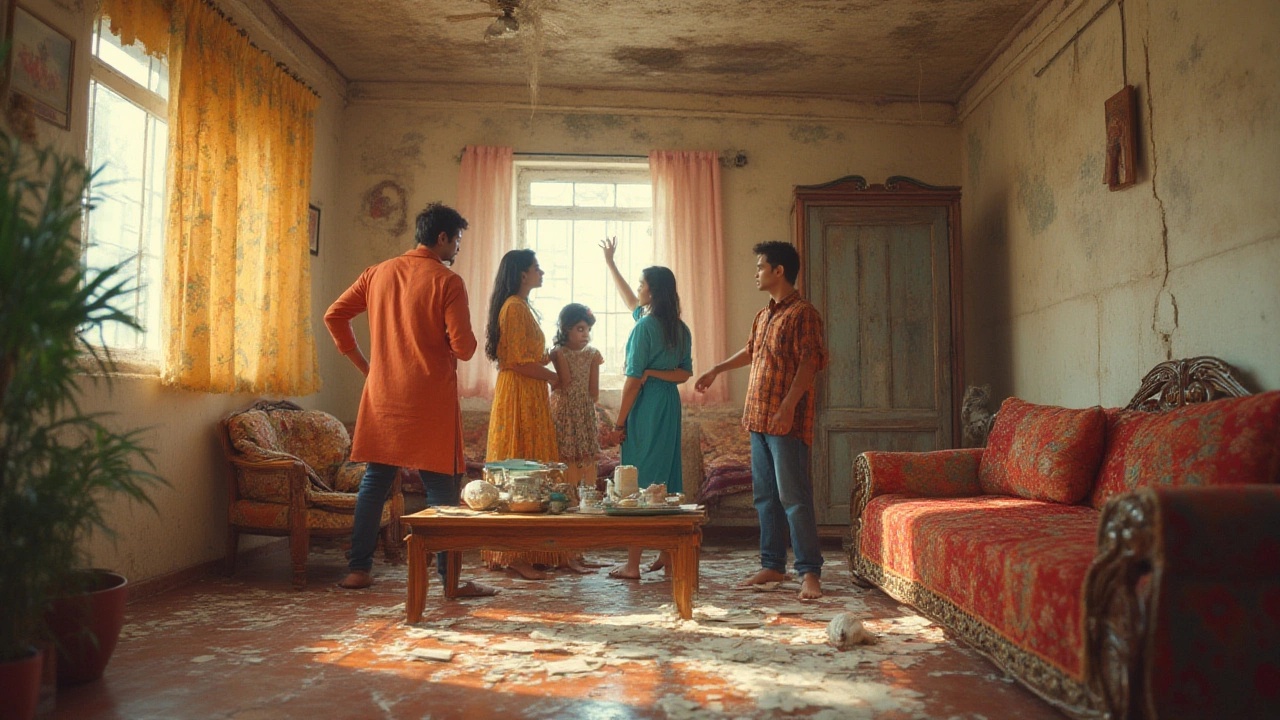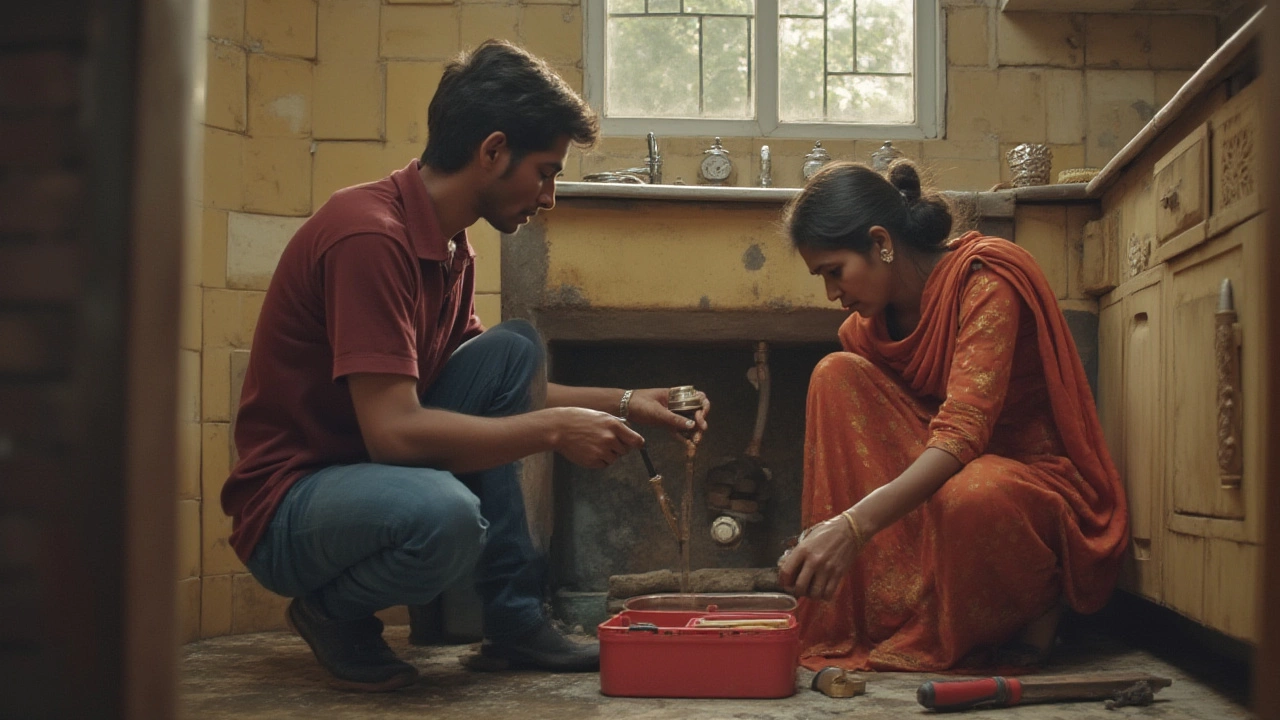The Most Expensive House Repairs: What Costs Homeowners the Most?

Here’s a chilling thought: your house might be sitting on a financial landmine, and you wouldn’t know it until the cracks start to show. Homeowners always brace themselves for a leaky tap or a busted door, but some problems lurk deep beneath the surface—literally and figuratively. These big-ticket repairs can blindside you, especially if they’re ignored too long. Not even Max, my loyal Labrador, can sniff out trouble hiding behind the walls or under the floors. So, what are these nightmare home repairs everyone dreads?
Foundation Repairs: The True Money Pit
Foundation repairs consistently top the list of the most expensive things to fix in a house. The foundation supports everything, so when it shifts, cracks, or subsides, you’re in for a financial rollercoaster. In the UK, fixing a basic crack in the foundation might cost a few hundred pounds—but let’s not get our hopes up. If you’re facing structural re-levelling or underpinning, the bill can easily rocket upwards of £10,000-£30,000, sometimes even more for older properties or those with poor access. The process is invasive; there’s no easy way out. Contractors might need to dig around the property, install piles or piers, then lift or stabilise the structure. And it’s not just about shoring up walls. Foundation issues can mess with plumbing, doors, floors, even your windows. Imagine going to open your front door and finding it jammed because the entire house has shifted a few centimetres!
Spotting foundation trouble early can save you serious cash. You might notice cracks in the walls, sloping floors, or doors that suddenly don’t fit their frames. Sometimes you’ll see gaps around windows, or, if you’re unlucky, water will find its way into your basement. In clay-rich areas like Greater Manchester, foundations can be extra vulnerable due to soil movement in wet and dry spells. So, if you live somewhere with these heavy, unpredictable soils, keep an eye out. The worst part? Home insurance policies often exclude certain types of foundation damage—like those caused by ‘normal’ settling or tree roots—so you may be on your own financially.
Thinking about buying a home? Pay for a decent survey. Skimp now, pay dearly later. Sellers might stage a house to perfection, but a good surveyor can spot underlying foundation issues before you sign on the dotted line. If you already own the house, address any small cracks right away. Don’t wait until you’re tripping over uneven floors to make a move. During droughts, water your foundations (yes, really). During heavy rain, prevent water from pooling with decent drainage. A tiny effort now can prevent a giant hole in your bank account down the road.
Roof Replacement: When Over Your Head Means Over Budget
The roof is another heavyweight when it comes to expensive fixes. No one wants to wake up in the middle of a storm and hear water dripping on the floor. But that’s just the start—once a roof starts leaking, it can damage insulation, ceilings, electrical wiring, furniture, and even structural beams. In the UK, the average cost of a new roof starts at around £5,000 for a standard terraced house, with larger homes and older properties sometimes costing £15,000-£20,000 or more. Materials matter: slate and clay tiles cost more than basic asphalt, but tend to last longer.
Why do roofs cost so much? It’s a mix of prices for materials, scaffolding, skilled labour, and the sheer scale of the job. Some houses are more challenging than others—think steep pitch, chimneys, skylights, or awkward valley sections. If the roof’s wooden structure (rafters or decking) is damaged by water or rot, expect the costs to jump. Add in removing the old roof and disposing of the debris, and you’ll see how the numbers climb. The worst part? Roof damage can go unnoticed for years. Water stains in the attic, missing tiles, and moss growth are just a few warning signs. But ignoring it only makes things pricier as interior water damage mounts up.
Here’s a little tip: always check your attic after heavy rain. Damp spots or visible daylight where it shouldn’t be mean trouble. Clean the gutters twice a year and trim overhanging branches—fallen debris can bash tiles and block drainage. Those small roof fixes, maybe a hundred quid here and there, can save you from having to fork out ten grand in future. And get quotes from more than one roofer; prices and advice can vary wildly. You don’t want to be that person caught scrabbling for emergency repairs during a torrential downpour, trust me.

Plumbing Nightmares: Bust Pipes and Hidden Leaks
If you’ve ever had a pipe burst, you’ll know the panic as water gushes everywhere, soaking floors, ruining walls, and sometimes shorting out electrics. But not all plumbing nightmares make themselves known so spectacularly. Slow leaks, damaged old pipes, and sewer backups can all play havoc with your health, your sanity, and your wallet. A single major pipe replacement can cost anywhere from £2,000-£10,000, depending on how much you need to fix and how easy it is to reach the pipes. That’s before you start talking about patching up the damage water does to flooring or plaster.
Older homes, especially those built before 1970, often still have iron, lead, or old copper pipes. These are ticking time bombs—lead is hazardous, and iron rusts from the inside out. A full house re-plumb can run into tens of thousands for a large property. The hidden costs often come from what’s hardest to see: pipes behind walls, under floors, or even buried in concrete. When leaks crop up, you might not spot the signs for ages. Faint musty smells, wall stains, warm spots on the floor (from leaking hot water), or water pressure drops are classic clues. Miss them, and you might face a nasty surprise during a kitchen remodel, or find black mould quietly taking over your cupboard.
What can you do? First, listen to your plumbing. Gurgles, rattles, and clanging are red flags. Check for leaks under sinks, and if your house is old, ask a plumber for an inspection—even just a look at the mains valve and obvious pipework can spot problems brewing. Insulate pipes in winter to stop them freezing and bursting. Never ignore a dripping tap; it could be the start of a bigger problem. And if your water bill suddenly spikes, it might mean a leak is hiding somewhere. There’s even leak detection gadgets nowadays—worth a look, especially for peace of mind.
Electrical System Overhauls: Not for the Faint-Hearted
Outdated electrics can be more dangerous than a rogue plug socket or flickering light. Modern homes need sturdy wiring to support all those gadgets, chargers, and the latest kitchen tech. Yet, countless properties still run on old wiring, which isn’t just an inconvenience—it’s a fire risk. Rewiring a house can be jaw-dropping: anywhere from £3,000 to over £10,000 in the UK for an average home, more for large or complex layouts. The disruption is huge too. Electricians will need to lift floorboards, chase grooves into walls, and install new consumer units to keep you safe and legal.
How do you know if your house needs an overhaul? Look out for regular blown fuses, buzzing sockets, old-style fuse boxes (with rewireable fuses rather than modern breakers), or ancient switchgear. If the wiring is cloth-covered, greenish, or rubbery, it’s ancient—and unsafe. Another giveaway is arcing or ozone smells from outlets. Standards have changed a lot over the years and, in the UK, anything pre-1970s is unlikely to be up to scratch. Changes in safety regs are frequent—think RCDs, earth bonding, upgraded consumer units—so even houses rewired in the 1990s can fall behind if you want to install things like heat pumps or EV chargers.
Don’t wait for things to get scary. If you buy an older house, demand an electrical installation condition report (EICR). This highlights what’s urgent and what isn’t. Make friends with a reputable, NICEIC-accredited sparkie. Research shows dodgy electrics cause more than 20,000 accidental fires a year in Britain, and the cost of a full rewire is nothing compared to losing your home—or worse. When budgeting, ask for a quote covering wall repairs and redecoration after the upheaval, because your house will look like a building site when the cables are going in. If you spot any of those warning signs, get them checked promptly; small fixes can keep your house and your family safe.

Heating and Air Systems: When Comfort Turns Costly
Central heating and air conditioning systems have quietly become the heart of the home, especially with British summers getting hotter. Replacing a boiler, heat pump, or entire HVAC system can burn through savings like nothing else. A new combi boiler in the UK can cost up to £3,000-£4,000, but if you’re moving to a modern heat pump system (especially for bigger houses), total costs can top £10,000 or more. Air conditioning hasn’t always been standard, but that’s changing, and retrofitting is both invasive and pricey. Add ductwork installation or radiator replacements, and it gets even more expensive.
It’s not just parts and labour—the real pain comes from losing heating or cooling when you need it most. I’ll never forget the scramble one January morning when our ancient boiler finally gave up. Max, my dog, pressed close by the radiator all night, while the house became an igloo. If you skip yearly servicing, breakdowns are likely to hit at the worst possible time. Worse, old systems can leak dangerous gases—think carbon monoxide—or chew through energy, costing a fortune even when they’re working ‘fine’.
Look after your heating and cooling kit and it’ll look after you. Get annual checks, bleed radiators, change filters, and keep dust and fluff (hidden coil killers) away from vents. Watch for rising bills or strange noises—clanks and bangs are cries for help, not just background music. If your system is more than 15 years old, start planning for its replacement instead of hoping to get lucky. Grants are available for eco upgrades, but they take planning, and demand is high—don’t leave it until your system croaks. Old systems might seem to get by, but modern replacements are safer, more reliable, and far more efficient. Ask your installer about energy ratings—an A-rated modern boiler can slash heating bills compared to an old clunker. That’s still little comfort when you’re looking at a bank balance dropping fast.
The bottom line? The most expensive fix in a house is about more than the number on the invoice. It’s about the scale of disruption, surprise costs, and the way major faults can trigger a domino effect through your entire home. From foundations to roof tiles, pipes to plugs, ignoring small problems is reckless. Homeownership is a constant balancing act between saving pounds today and avoiding a gut-wrenching blow tomorrow. Keep an eagle eye on the basics, get things checked early, and when in doubt, always ask an expert. The future you—and your wallet—will thank you.
Write a comment